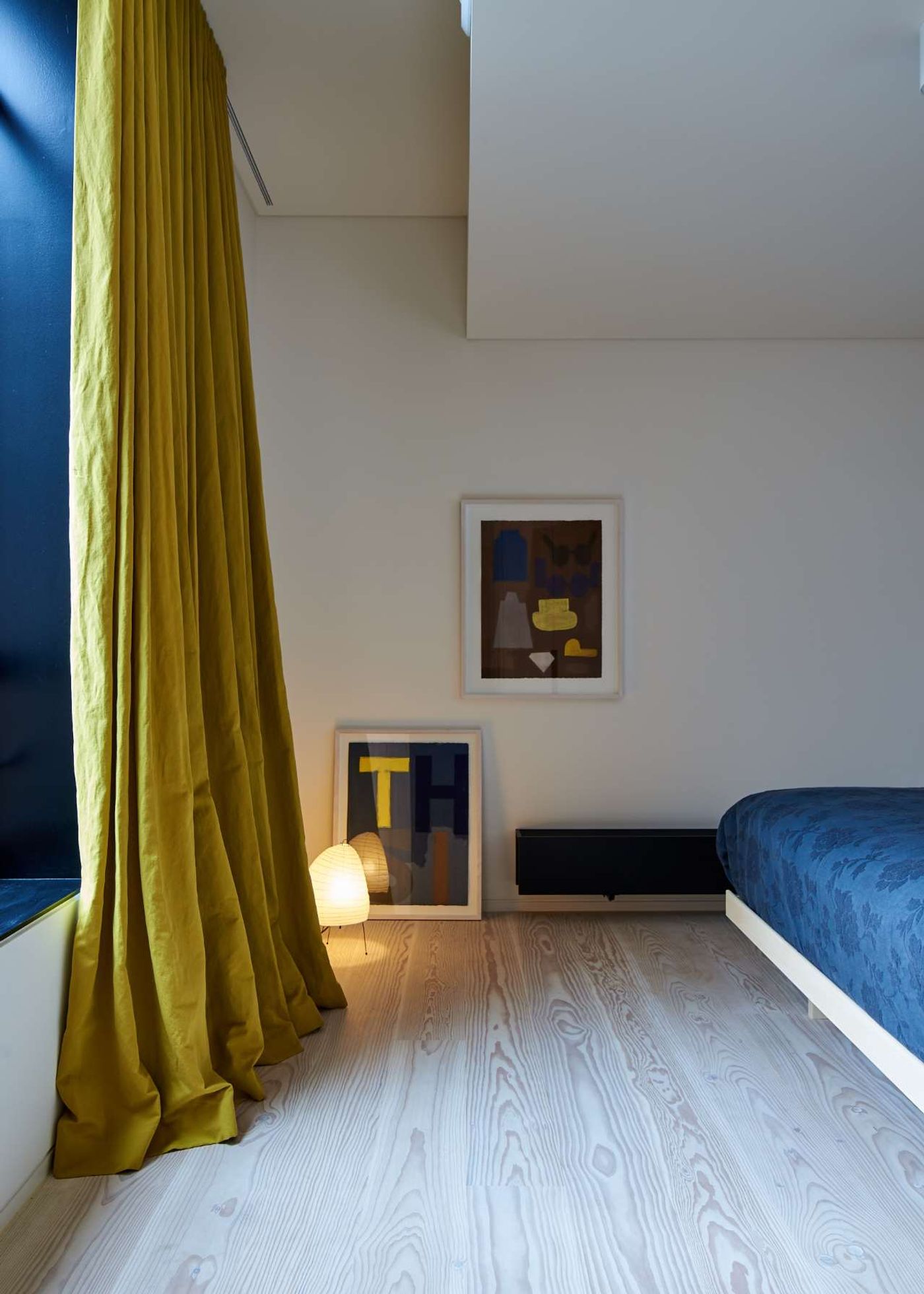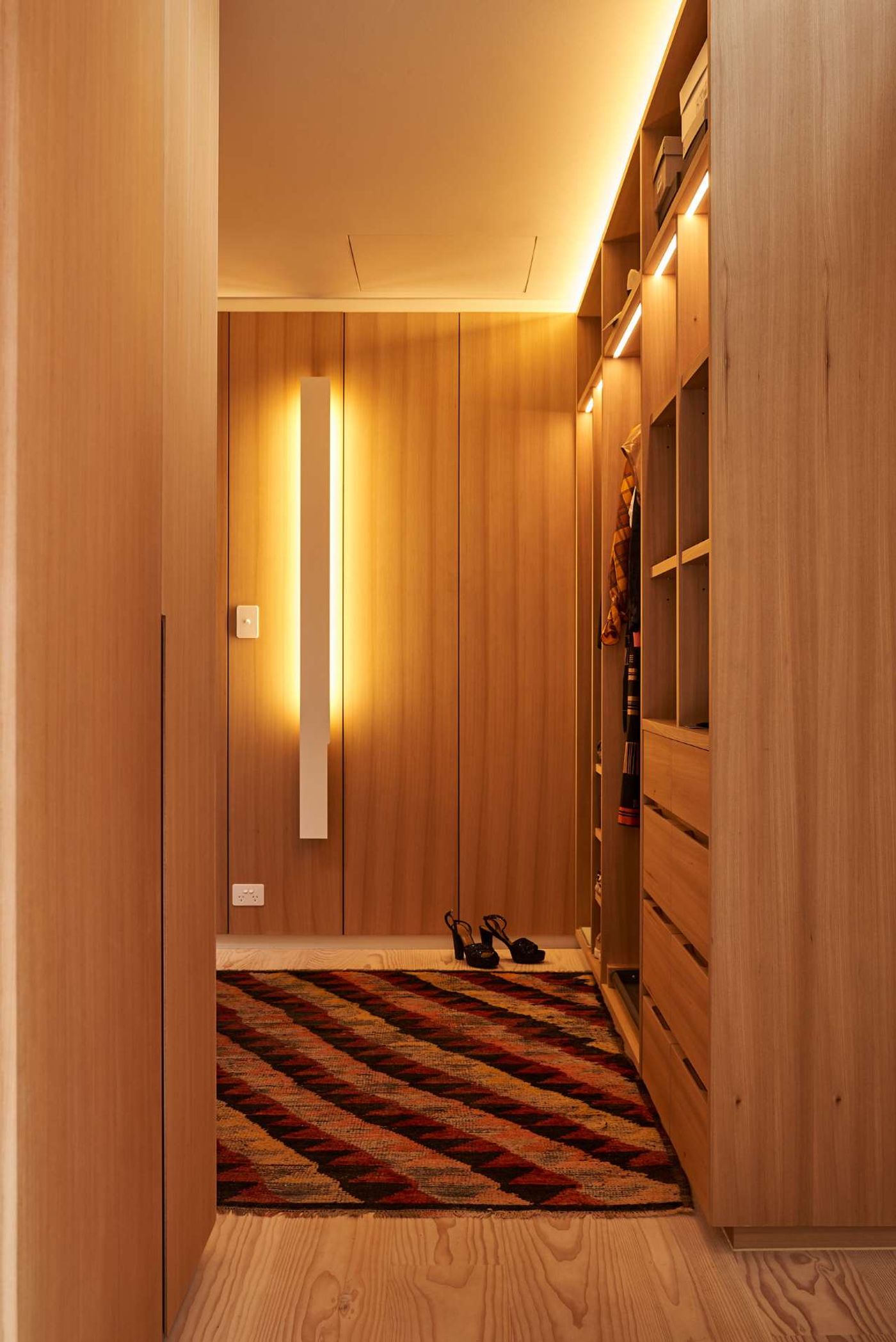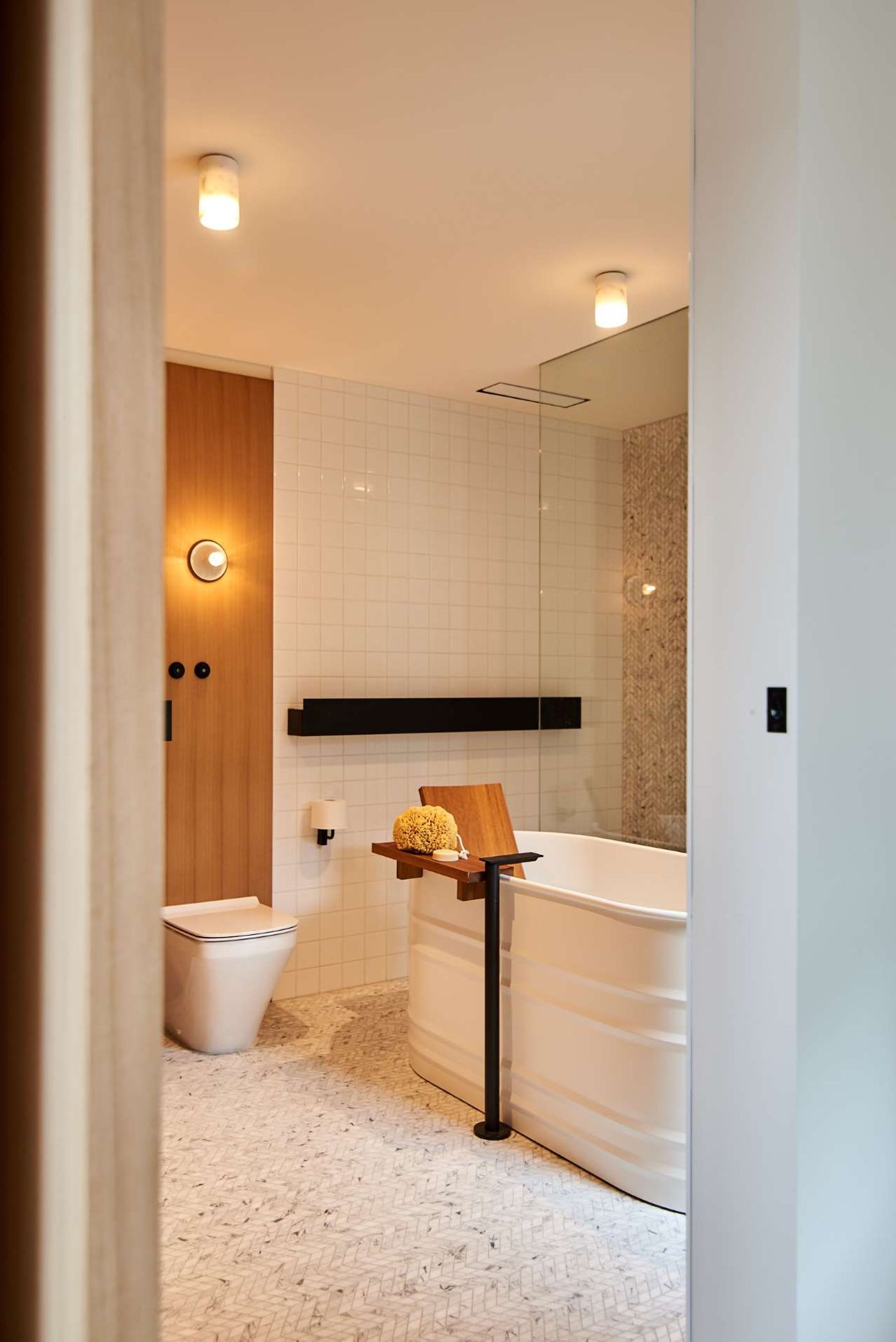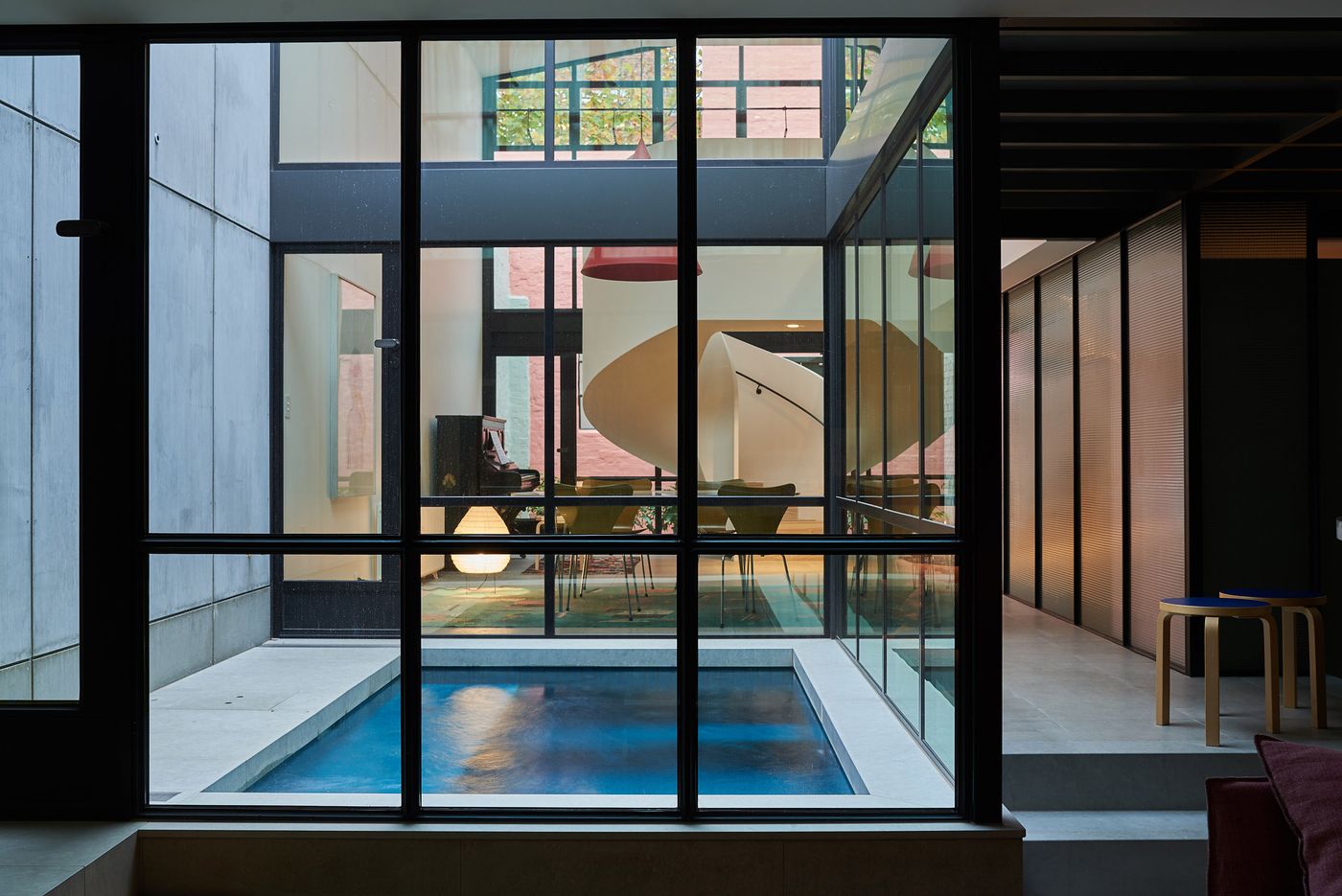
HOLA Projects Transforms an Interwar Factory in Melbourne into a Family Residence
Words by Eric David
Location
Melbourne, Australia
HOLA Projects Transforms an Interwar Factory in Melbourne into a Family Residence
Words by Eric David
Melbourne, Australia
Melbourne, Australia
Location
Located in Fitzroy, a once working class inner-city suburb of Melbourne that has become one of the city’s hippest neighbourhoods, this recently renovated family residence occupies an interwar factory which Hong Kong and Melbourne-based architectural studio HOLA PROJECTS has transformed, inspired by the owners’ affinity for early European Modernism, into a contemporary dwelling with a Bauhausian aesthetic that pays homage to its industrial past.
Built in 1920, the brick building is a modest, one-storey structure that used to house the Federal Trolley and Truck Company, a manufacturing facility for axles and undercarriages for the city’s trams. What distinguishes it from other local industrial facilities, and the reason it has been listed as a heritage property, is its Art Deco-inspired façade which features a stepped parapet adorned by an unusual corbelled brick decoration and the company’s name in slender metal signage. The architects have kept the building’s original brick shell intact including the façade which has been meticulously refurbished, its retro sensibility belying the complete transformation that has taken place inside.
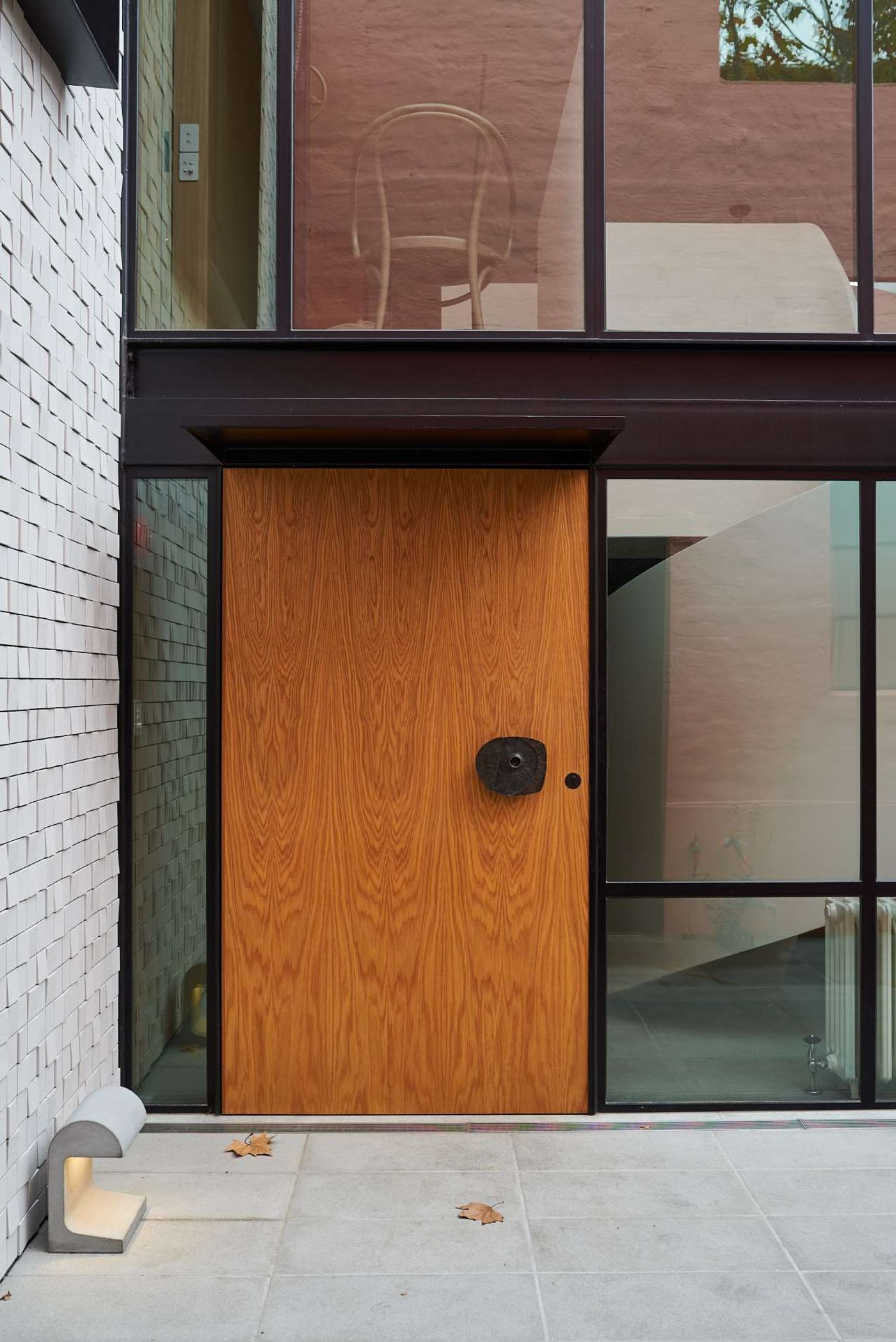
Photo by Daniel Aulsebrook.
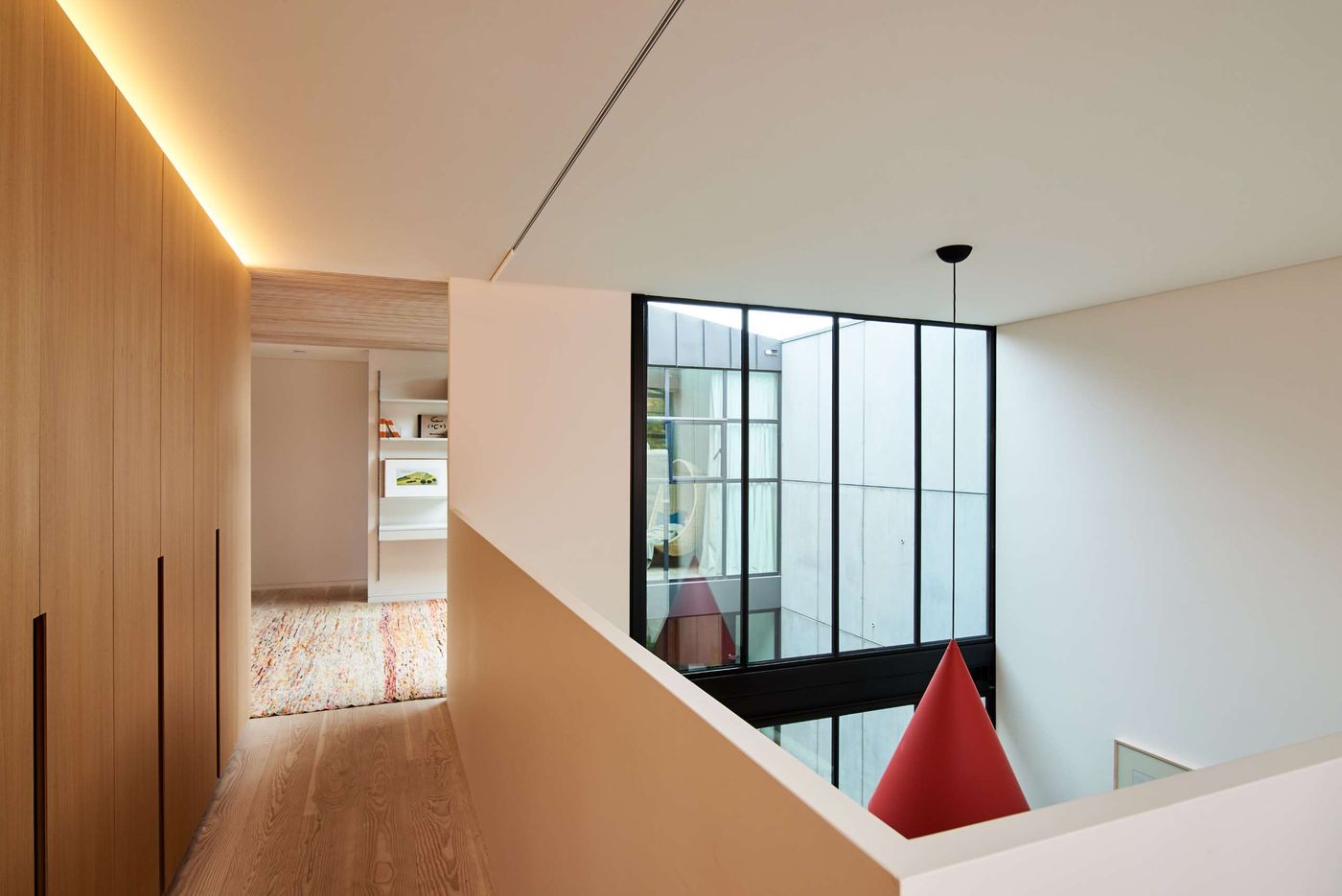
Photo by Daniel Aulsebrook.
Due to the building’s depth, the interiors were characterized by insufficient daylight penetration, made all the worse by the introduction of an upper floor. The architects have resolved this issue by inserting three fully glazed internal courtyards that funnel natural light into the rooms around them, allow for natural ventilation, which also provide visual connections across the house. Despite their common functionality, each courtyard serves a different purpose: The entrance court in the front of the building provides a buffer space between the exterior and interior, the central courtyard contains a compact pool around which the common areas unfold, and the kitchen courtyard in the back allows for diffused sunlight in the winter and cool breezes in the summer.
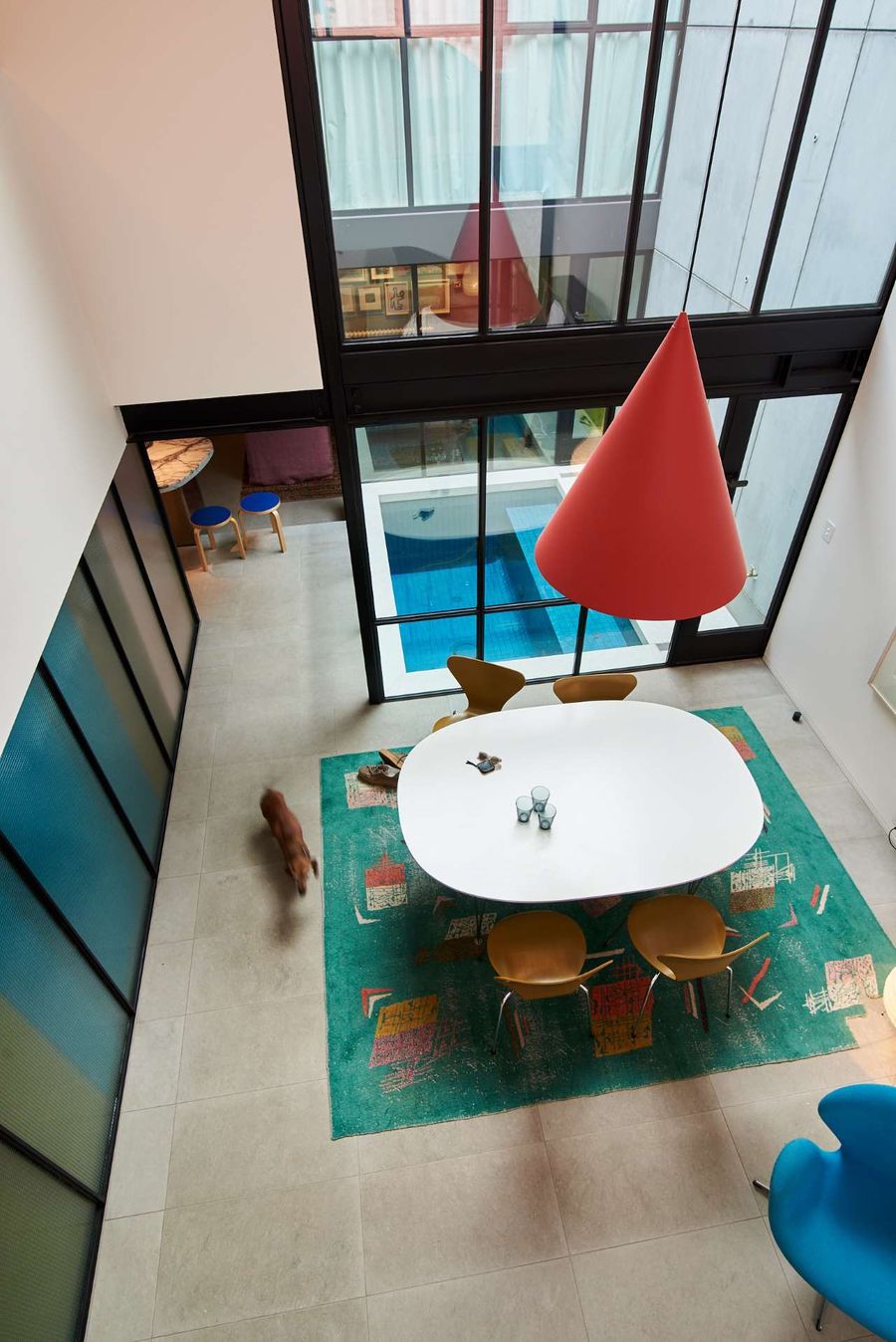
Photo by Daniel Aulsebrook.
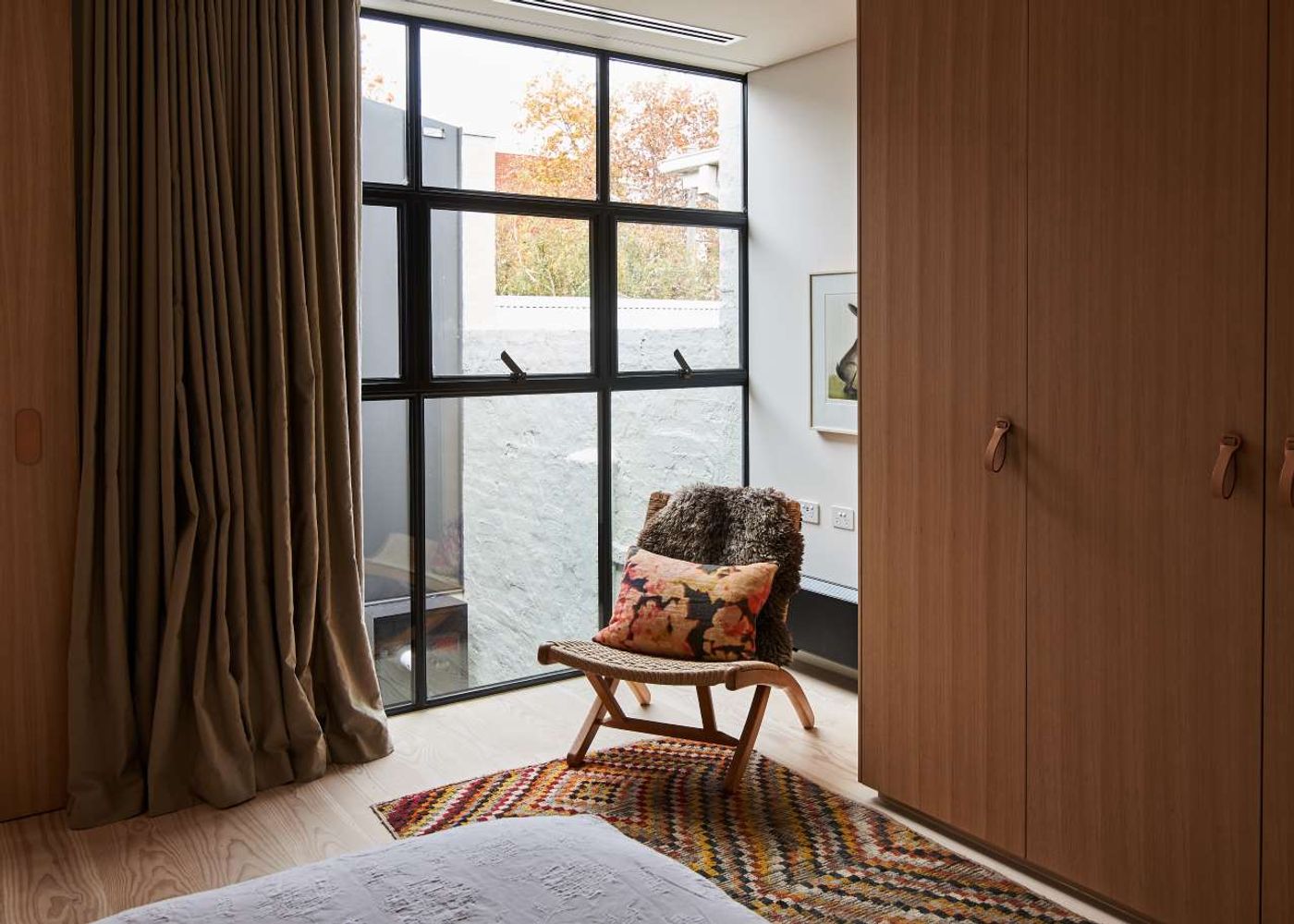
Photo by Daniel Aulsebrook.
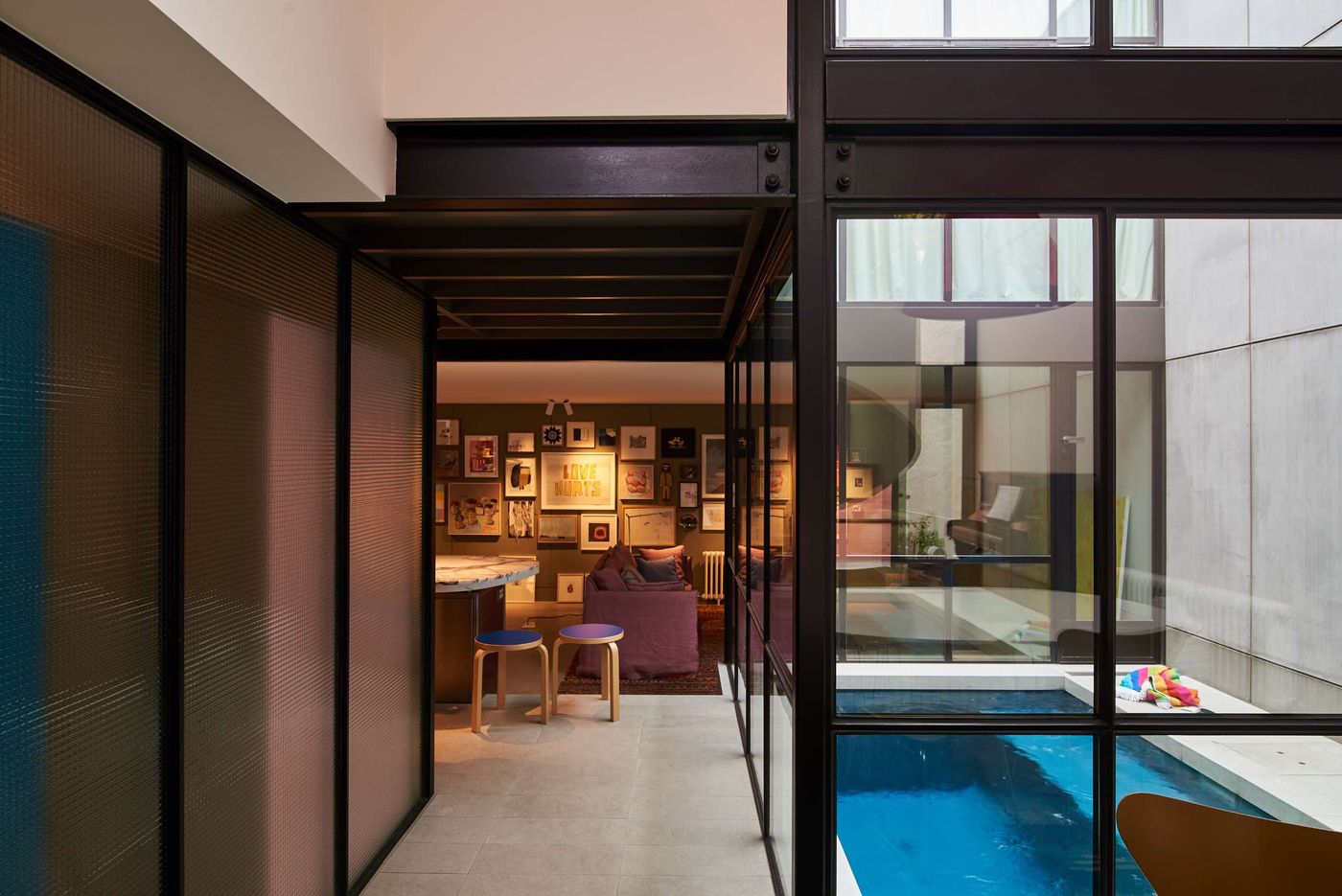
Photo by Daniel Aulsebrook.
A dominant element in the interior design is the visible steel structure, which reinforces the original building fabric and supports the upper floor. Painted black, it also alludes to the building’s industrial past as does the steel-framed glazing, and the use of wired glass panels that separate the kitchen from the dining area. The industrial references are complemented by a modernist sensibility of uncluttered and sleek lines and a neutral palette of white plaster walls, light grey stone floors in the communal areas and natural solid timber for the bedroom floors. The modernist aesthetic is further enhanced by a dramatic white concrete spiral staircase that channels Le Corbusier, as well as by an eclectic collection of mid-century furniture and light fittings, while the owners’ exuberant art collection and selection of vintage carpets add splashes of colour.
From bespoke Japanese elm cabinetry in the dressing room and custom laid marble mosaic in the master bathroom, to custom cast bronze window levers, bespoke wardrobe leather pulls and commissioned bronze doorknobs, every detail in the house has been carefully thought out and meticulously crafted. The architects' emphasis on craftsmanship not only ensures the project's quality, longevity, and elegance, but also pays homage to the building's former life of manufacturing excellence.
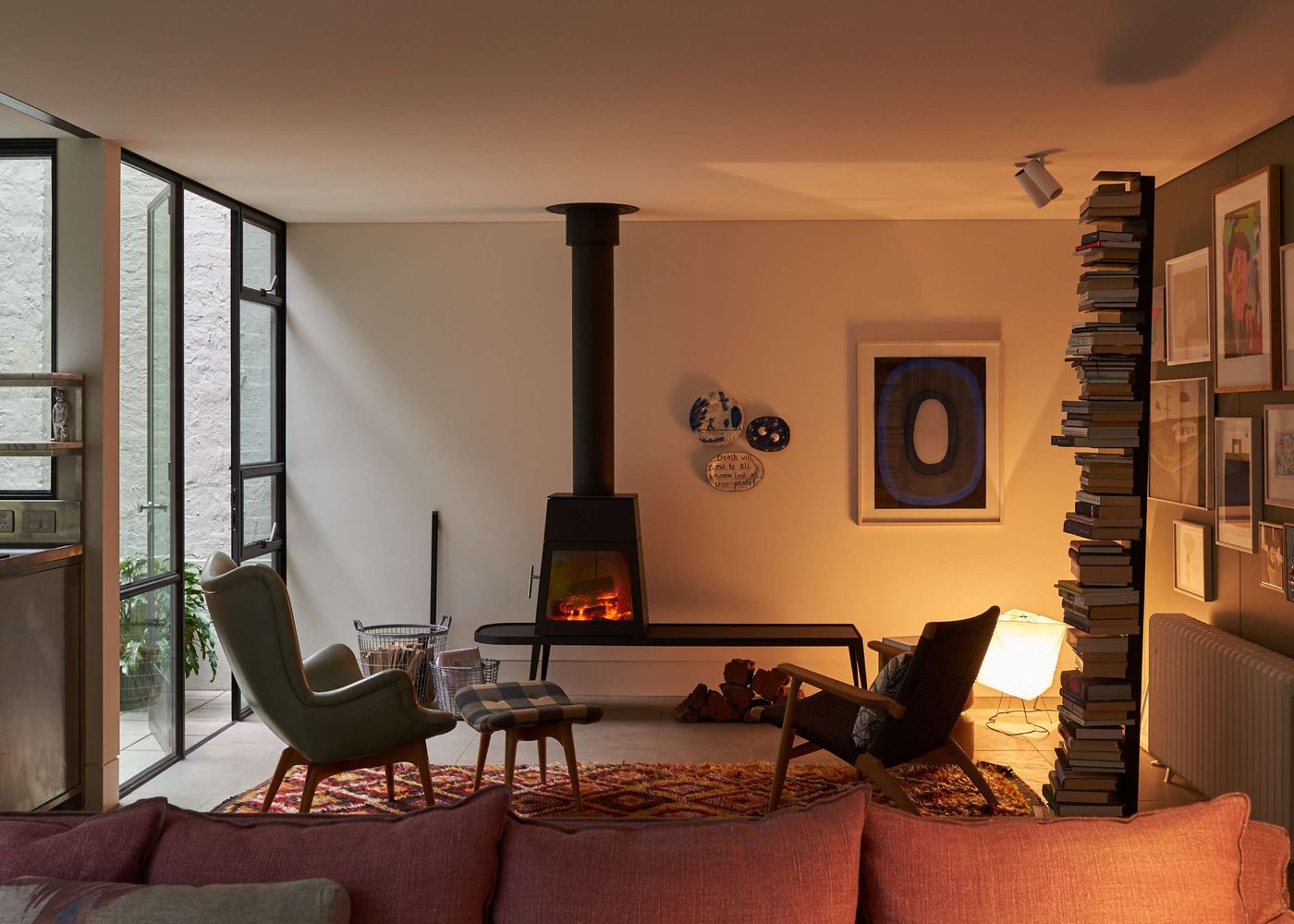
Photo by Daniel Aulsebrook.
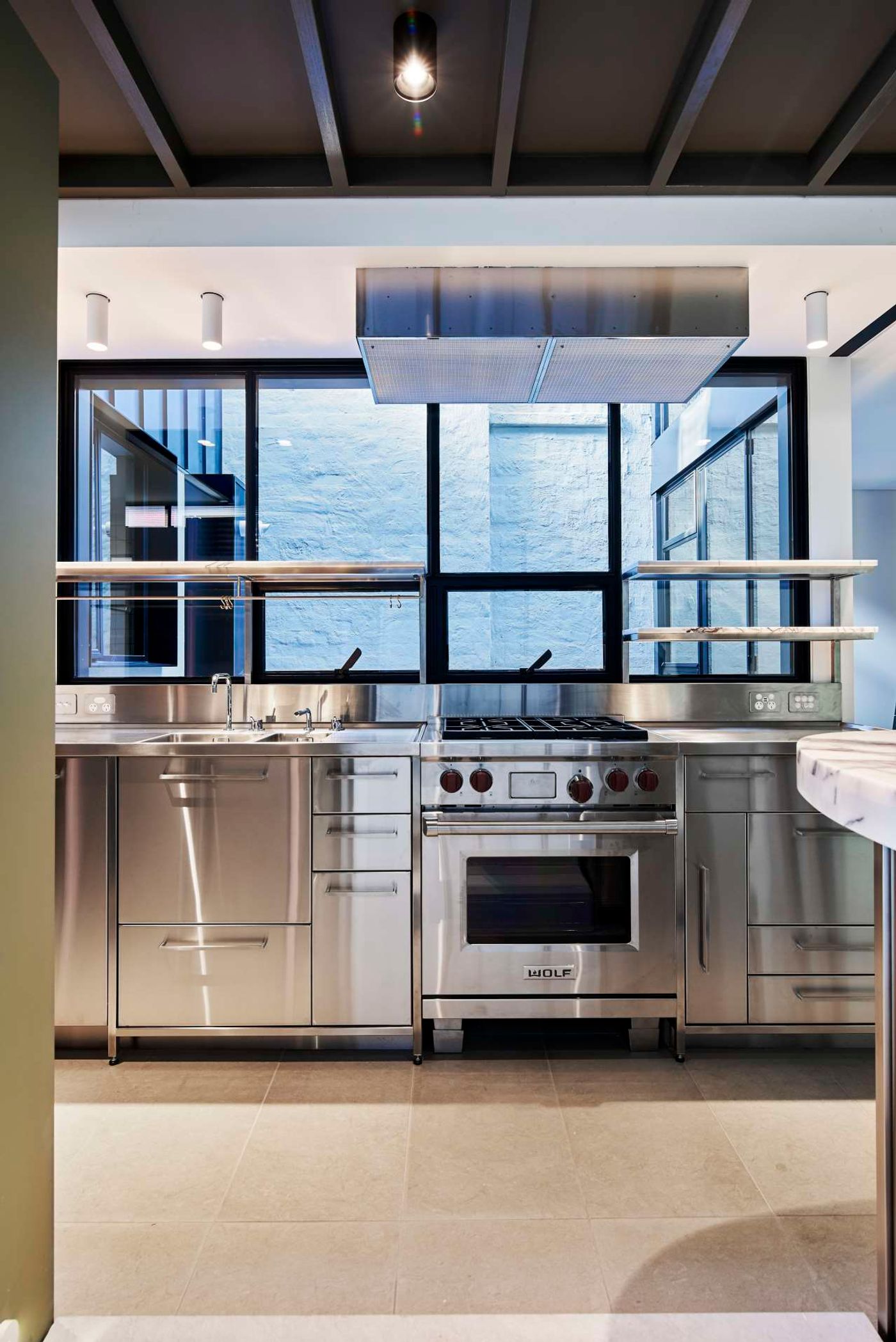
Photo by Daniel Aulsebrook.
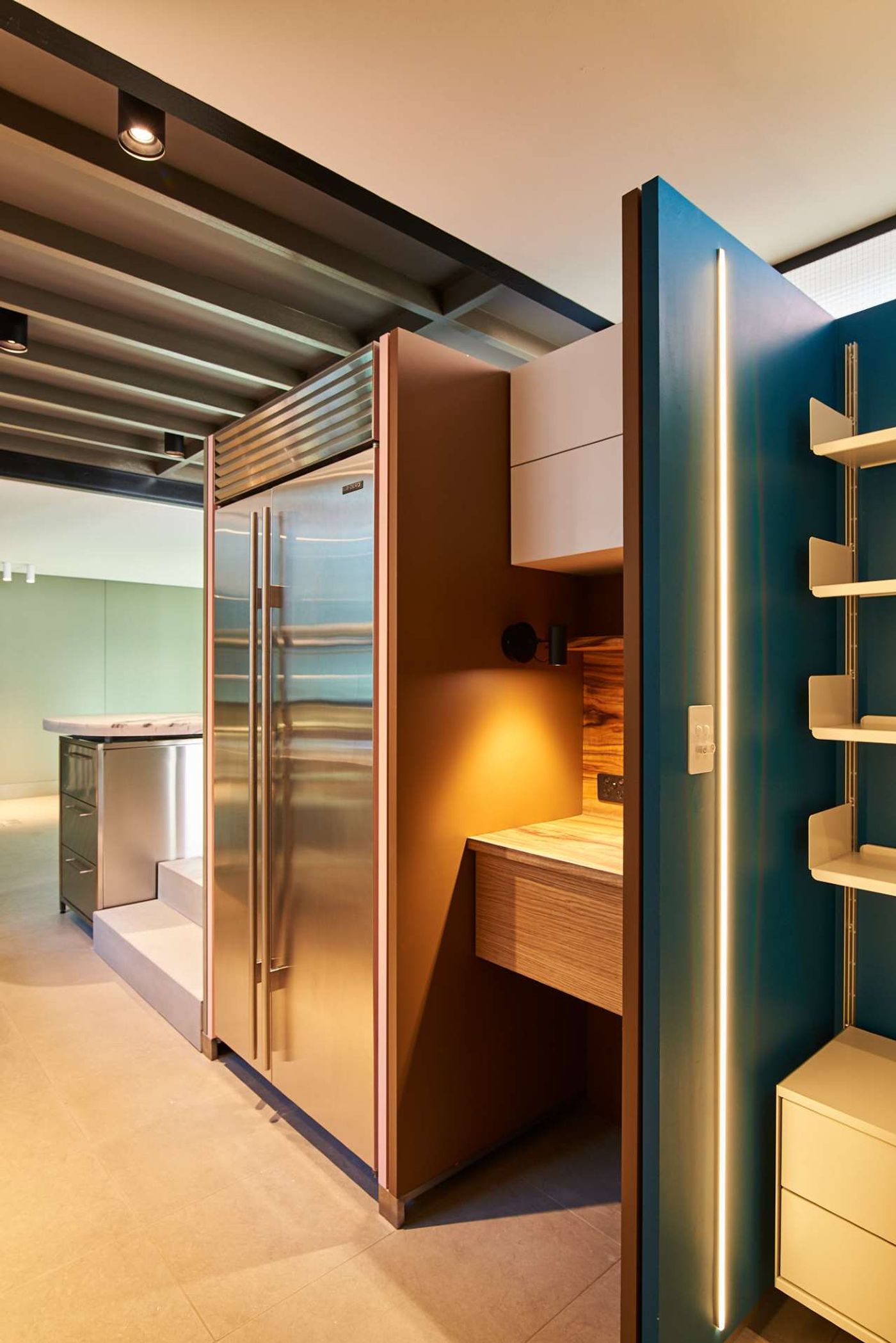
Photo by Daniel Aulsebrook.
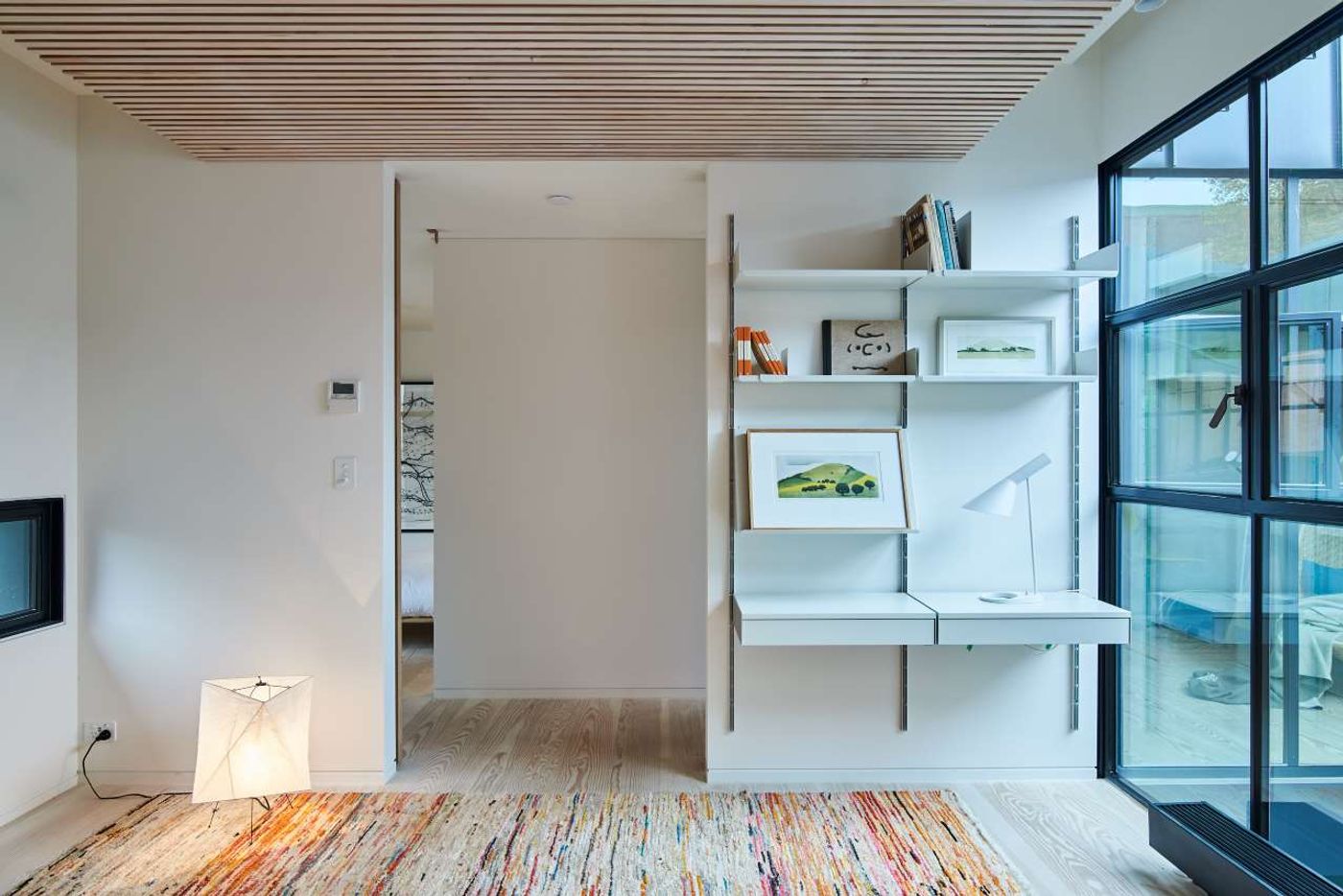
Photo by Daniel Aulsebrook.
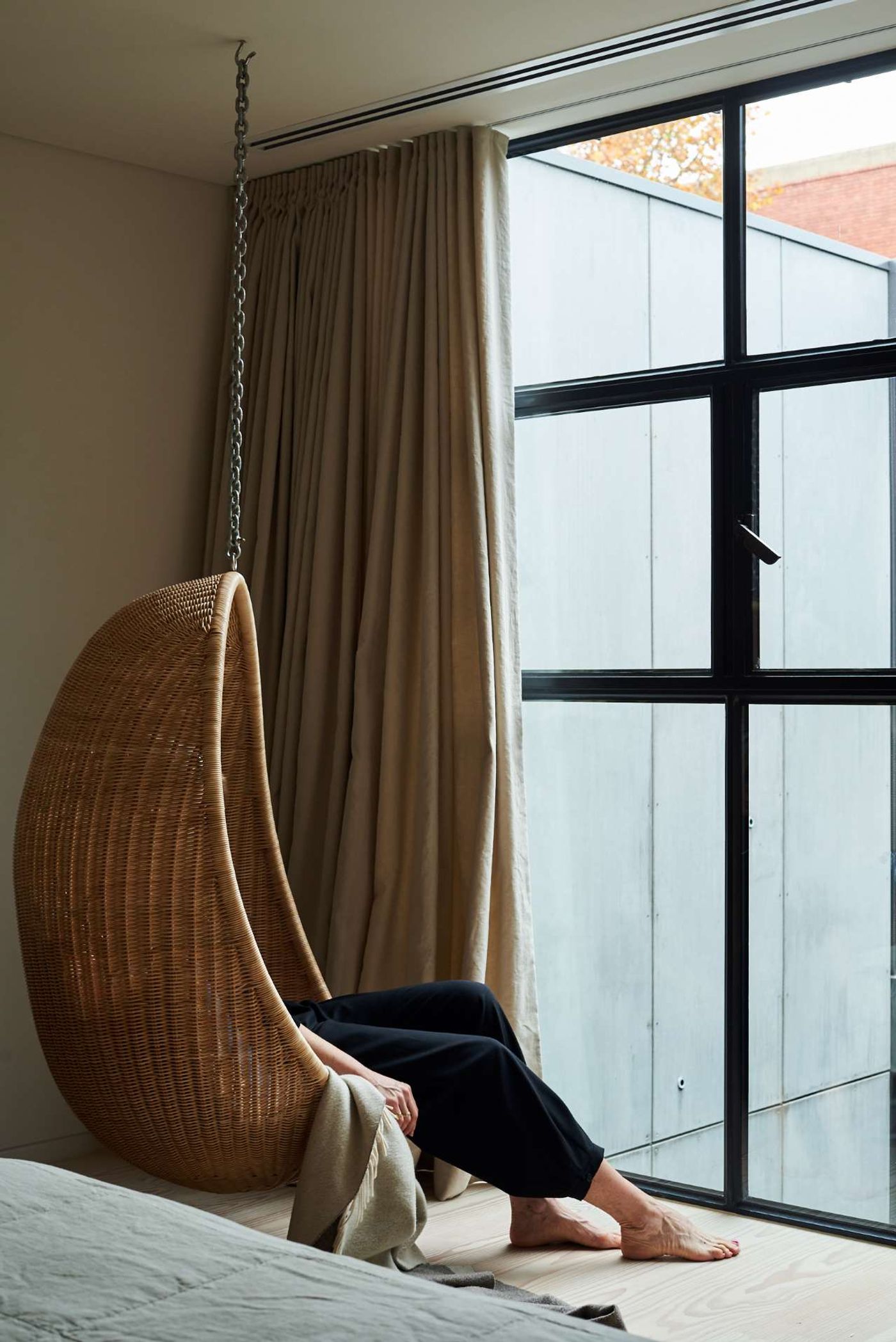
Photo by Daniel Aulsebrook.
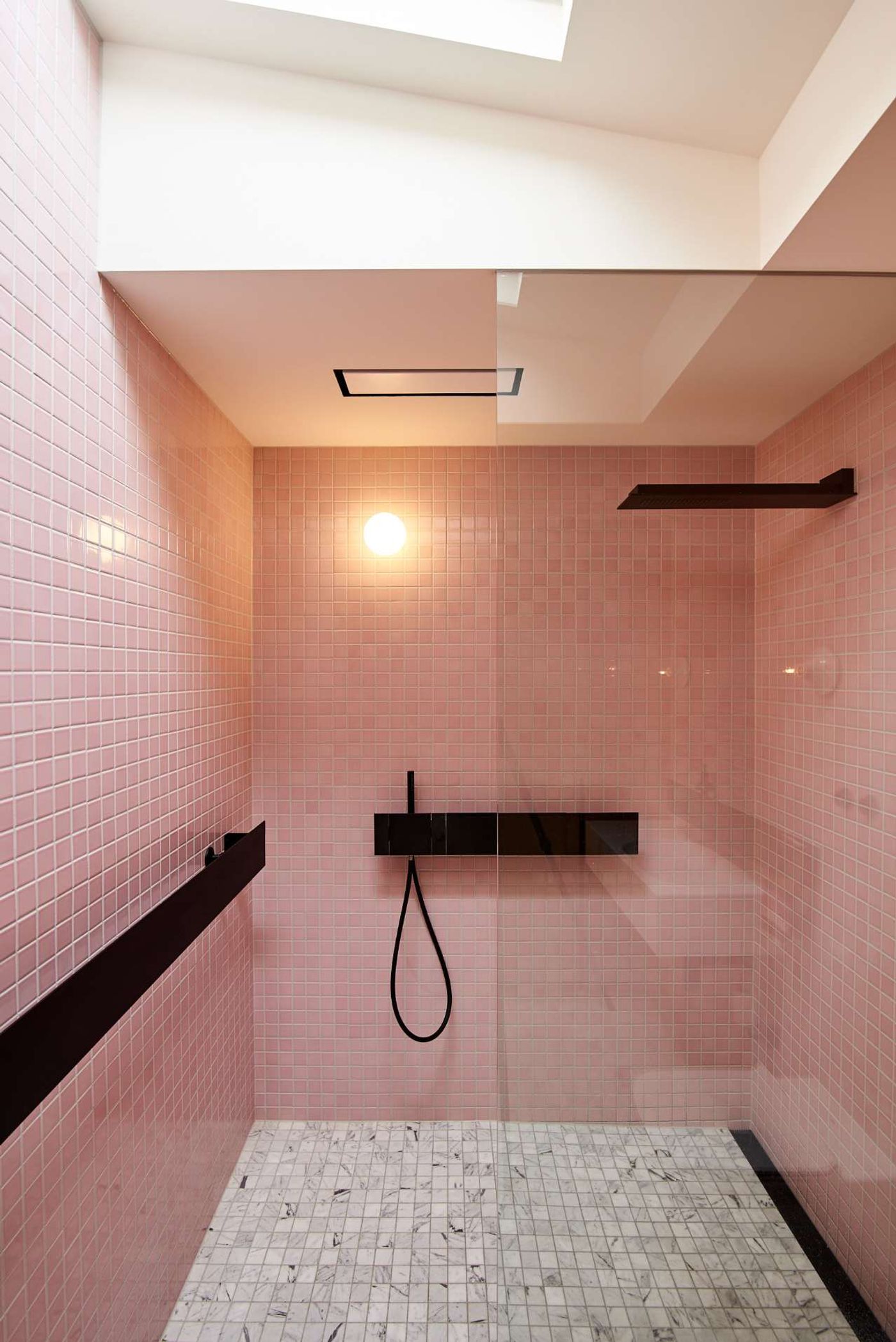
Photo by Daniel Aulsebrook.
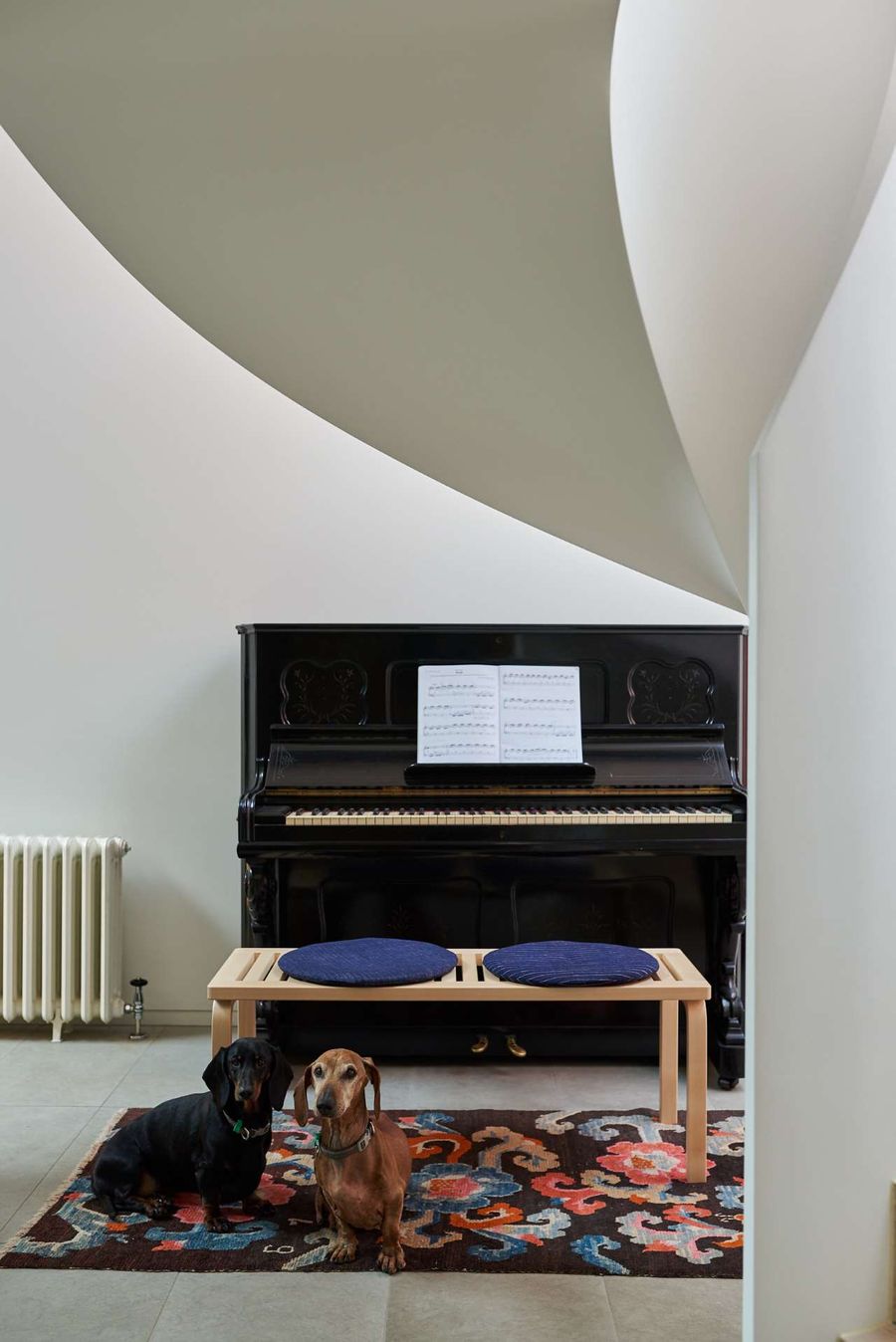
Photo by Daniel Aulsebrook.
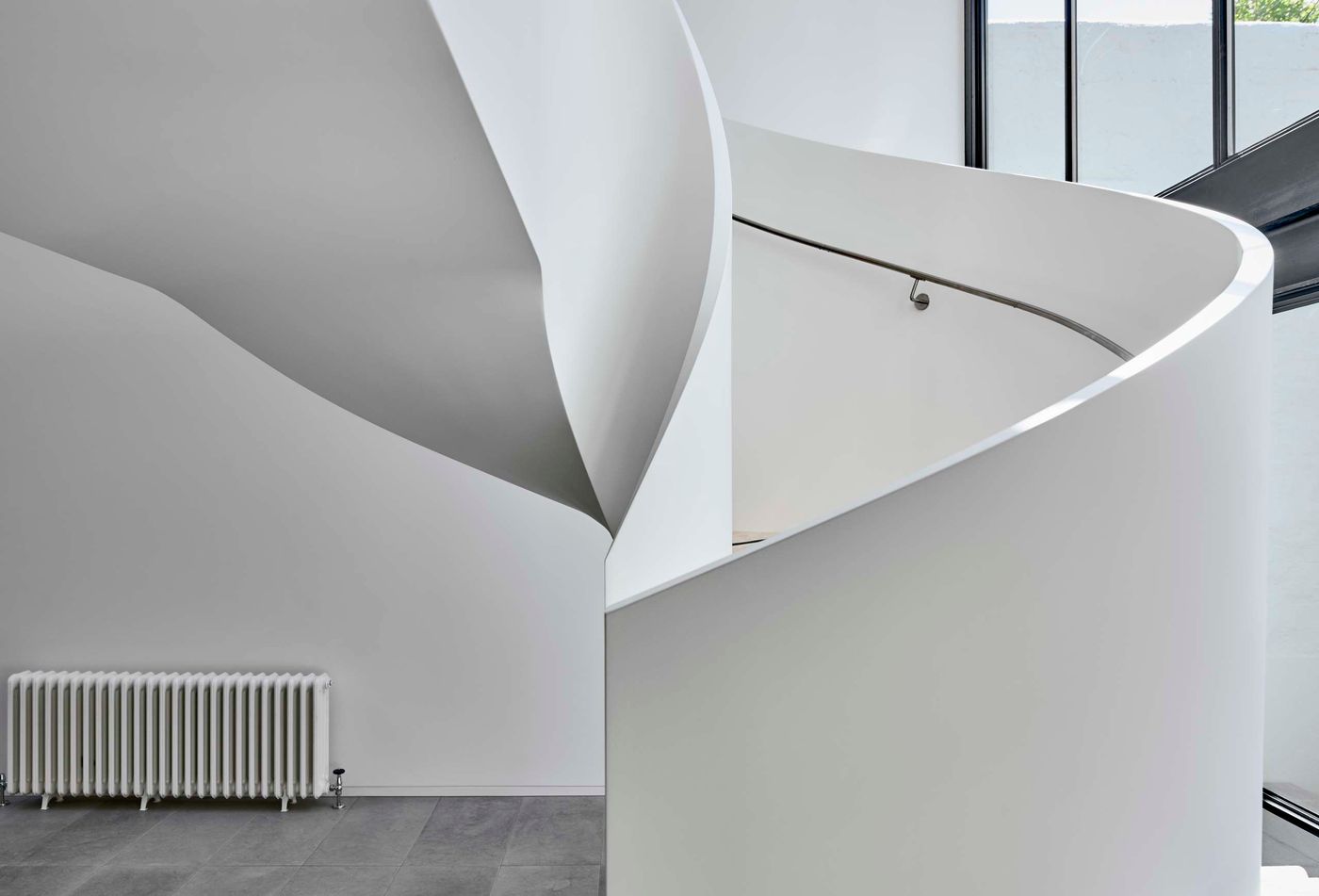
Photo by Daniel Aulsebrook.

Photo by Daniel Aulsebrook.
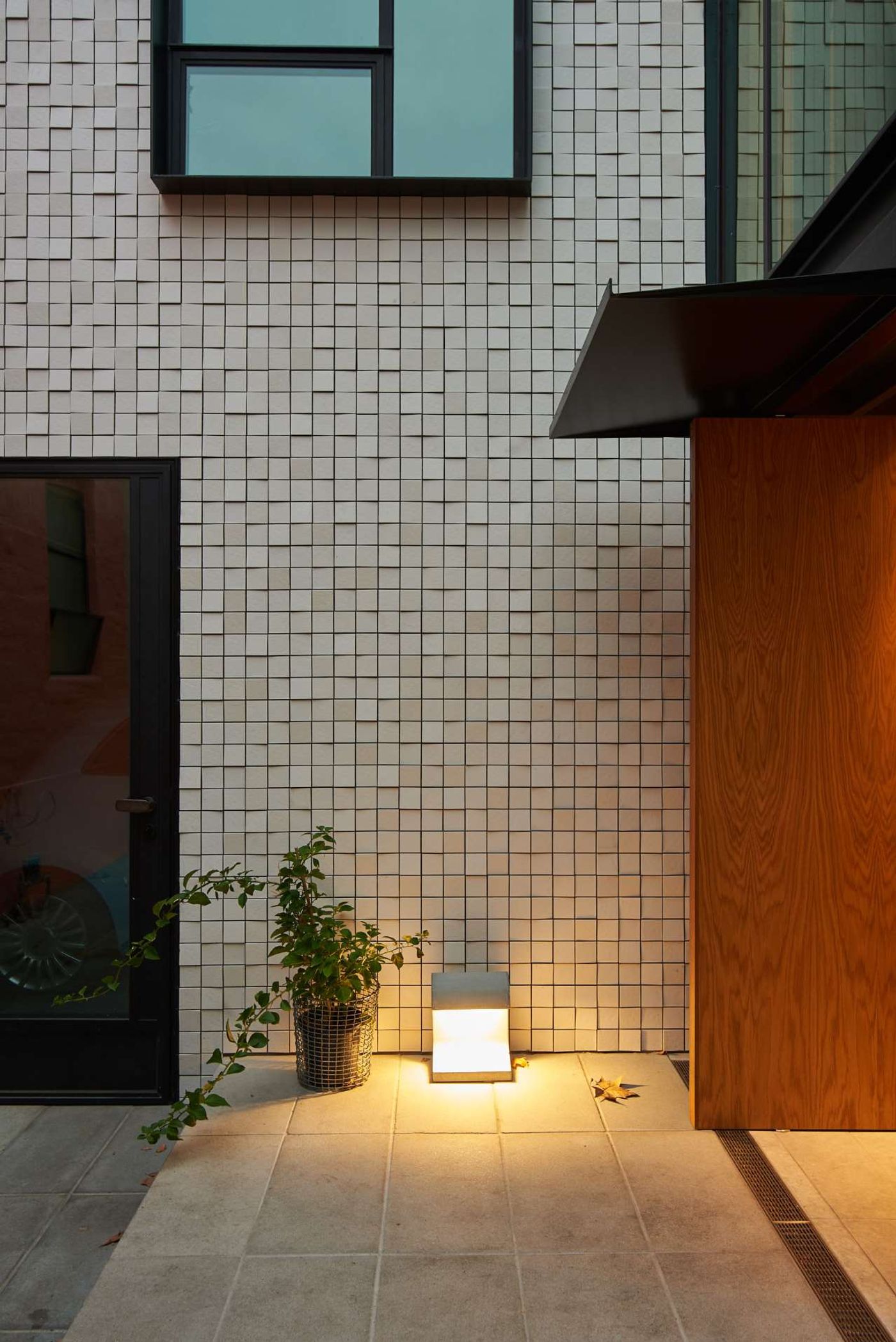
Photo by Daniel Aulsebrook.
